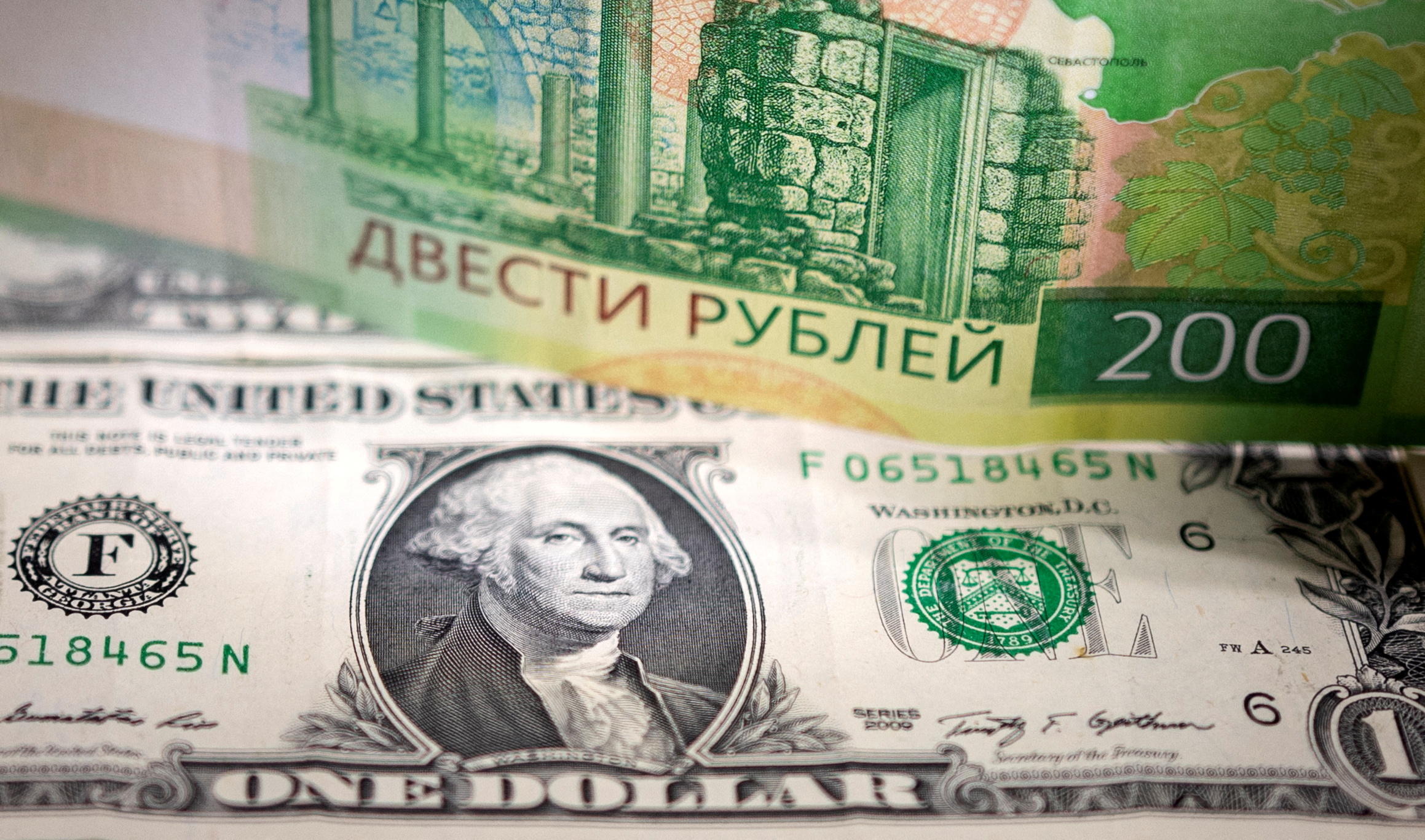
FILE PHOTO: Russian Rouble and U.S. Dollar banknotes are seen in this illustration taken, February 24, 2022. REUTERS/Dado Ruvic/Illustration
The exchange rate between the US Dollar (USD) and the Russian Ruble (RUB) is a topic of significant interest for global economists, investors, and individuals alike. Fluctuations in this exchange rate can have far-reaching consequences, impacting trade, investments, and the overall economic stability of both nations. In this article, we will delve into the factors influencing the USD to RUB exchange rate, historical trends, and the potential implications for various stakeholders.
Table of Contents
ToggleHistorical Perspective:
Understanding the historical performance of the USD to RUB exchange rate is crucial for gaining insights into its current dynamics. The Russian Ruble has experienced significant volatility over the years, influenced by geopolitical events, economic policies, and external market forces.
The most notable period in recent history was the Russian financial crisis of 2014, triggered by a combination of falling oil prices and Western sanctions. During this time, the Ruble experienced a sharp depreciation against major currencies, including the US Dollar. At its lowest point in December 2014, the USD to RUB exchange rate soared to unprecedented levels.
Since then, the Ruble has shown resilience, gradually recovering ground against the US Dollar. However, ongoing geopolitical tensions, sanctions, and fluctuations in oil prices continue to impact the exchange rate, creating an environment of uncertainty.
Factors Influencing the Exchange Rate:
Several factors contribute to the fluctuations in the USD to RUB exchange rate. Understanding these factors is essential for predicting future trends and making informed financial decisions.
- Oil Prices: Russia is a major oil exporter, and the Ruble’s value is closely tied to oil prices. When oil prices rise, Russia’s export revenues increase, providing support to the Ruble. Conversely, falling oil prices can lead to a depreciation of the Ruble against the US Dollar.
- Geopolitical Events: Geopolitical tensions and events, such as sanctions imposed by Western nations, can have a profound impact on the exchange rate. Sanctions, in particular, can limit Russia’s access to international financial markets and influence investor confidence, affecting the Ruble’s value.
- Economic Indicators: Economic indicators, including inflation rates, GDP growth, and unemployment, play a crucial role in determining the exchange rate. A robust Russian economy is likely to support the Ruble, while economic instability may lead to depreciation.
- Interest Rates: Interest rate differentials between the US and Russia influence capital flows and, consequently, the exchange rate. Higher interest rates in the US may attract foreign capital, leading to an appreciation of the US Dollar against the Ruble.
Current Market Dynamics:
As of the most recent data, the USD to RUB exchange rate reflects the ongoing interplay of the aforementioned factors. Geopolitical tensions, particularly those related to Russia’s relationships with Western nations, continue to be a key driver of exchange rate movements. Additionally, oil prices remain a significant factor, with fluctuations impacting the Ruble’s value.
The impact of sanctions on Russia’s access to international financial markets has created challenges for the Ruble. However, the country’s efforts to diversify its economy and reduce dependency on energy exports are contributing to a more stable economic outlook.
Investor Perspective:
For investors, the USD to RUB exchange rate presents both opportunities and risks. While the Ruble’s historical volatility may deter some investors, others see potential for gains, especially if the Russian economy continues to diversify and adapt to changing global dynamics.
Diversification strategies, risk management, and staying informed about geopolitical developments are crucial for investors navigating the USD to RUB exchange rate. Additionally, understanding the correlation between oil prices and the Ruble can help investors make more informed decisions.
Conclusion:
The USD to RUB exchange rate is a complex and dynamic metric influenced by a myriad of factors. Geopolitical events, economic indicators, and global market dynamics all play a role in shaping the value of the Russian Ruble against the US Dollar.
As the global economic landscape evolves, so too will the dynamics of this exchange rate. Investors, businesses, and policymakers must closely monitor these developments to make informed decisions in an ever-changing financial environment. While challenges persist, the Russian Ruble’s resilience and the ongoing efforts to strengthen the country’s economic fundamentals suggest a future where the USD to RUB exchange rate may see further stabilization.
